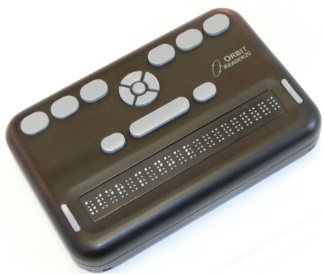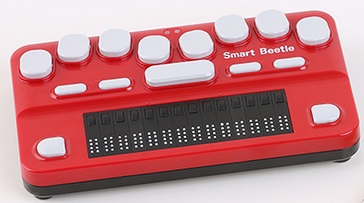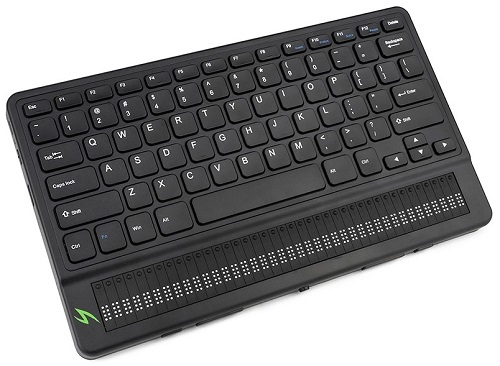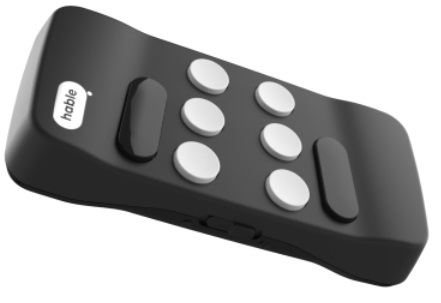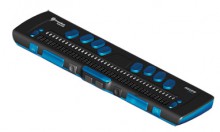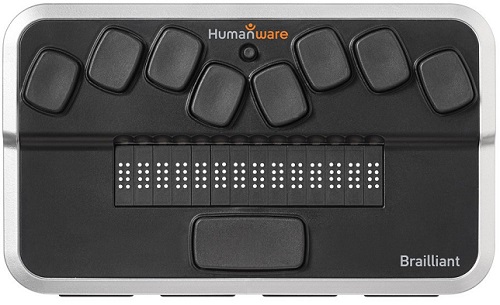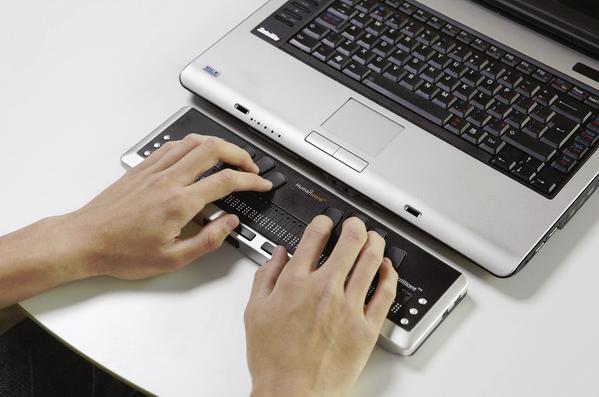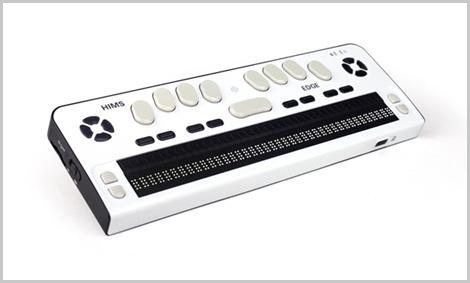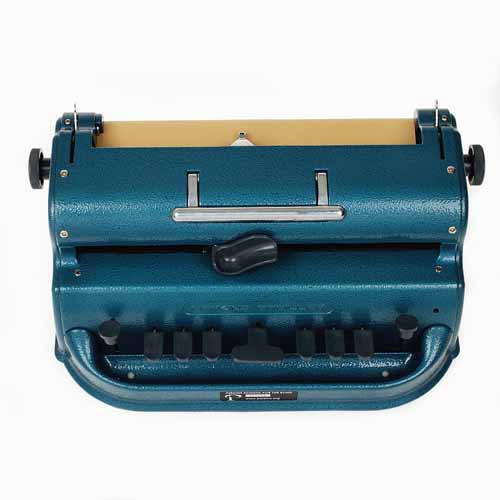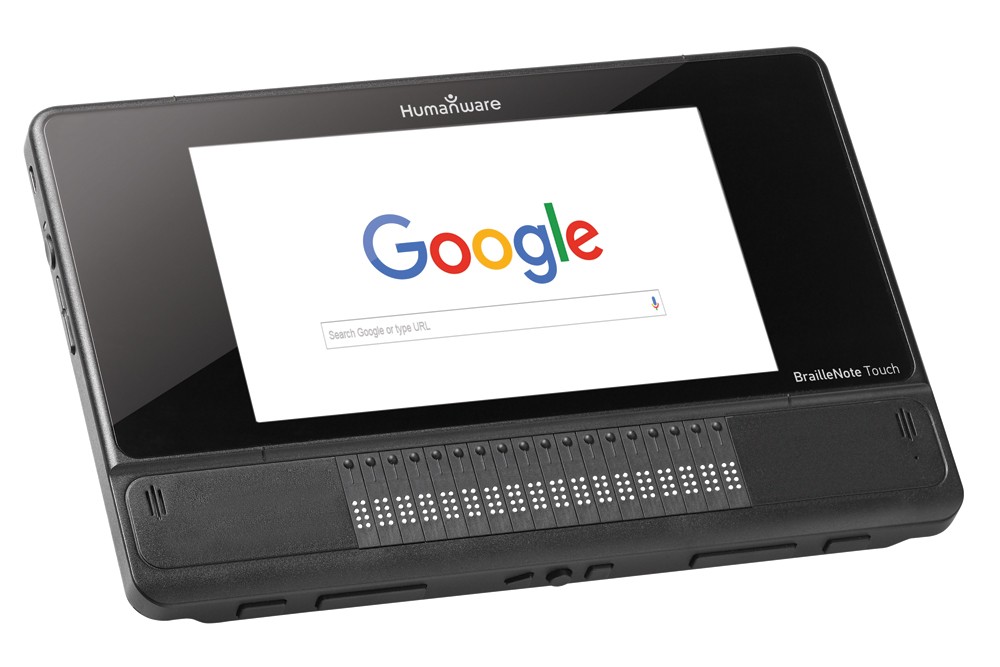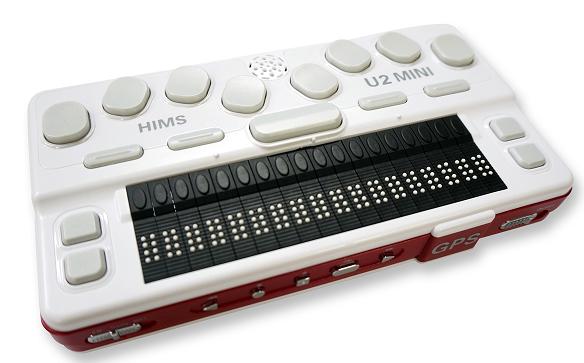Braille machines and note takers
This section includes devices used to create Braille.
Manual Braille machines may are portable or designed for desktop use in a similar way to traditional manual typewriters. They have six keys to produce the Braille (one key for each dot in a Braille cell).
Braille displays are tactile devices that are usually placed in front of a computer keyboard. They provide a means to read the contents of a computer screen by touch in Braille. Braille displays have a number of cells and each cell has six or eight pins. These pins are electronically moved up and down, to create a Braille version of the characters that appear on the computer screen. Each Braille cell represents one character from the screen. An 80-cell Braille display represents approximately one line of text on a screen.
Notetakers are portable devices that can be used as a word processor to take notes, record and organise information. Some may also have features to provide a calendar, phone book, the internet, email and run windows based operating systems. They feed information back by speech output or a Braille display. These notetakers have a braille keyboard and no screen.
Equipment to assist with learning Braille is also included.
